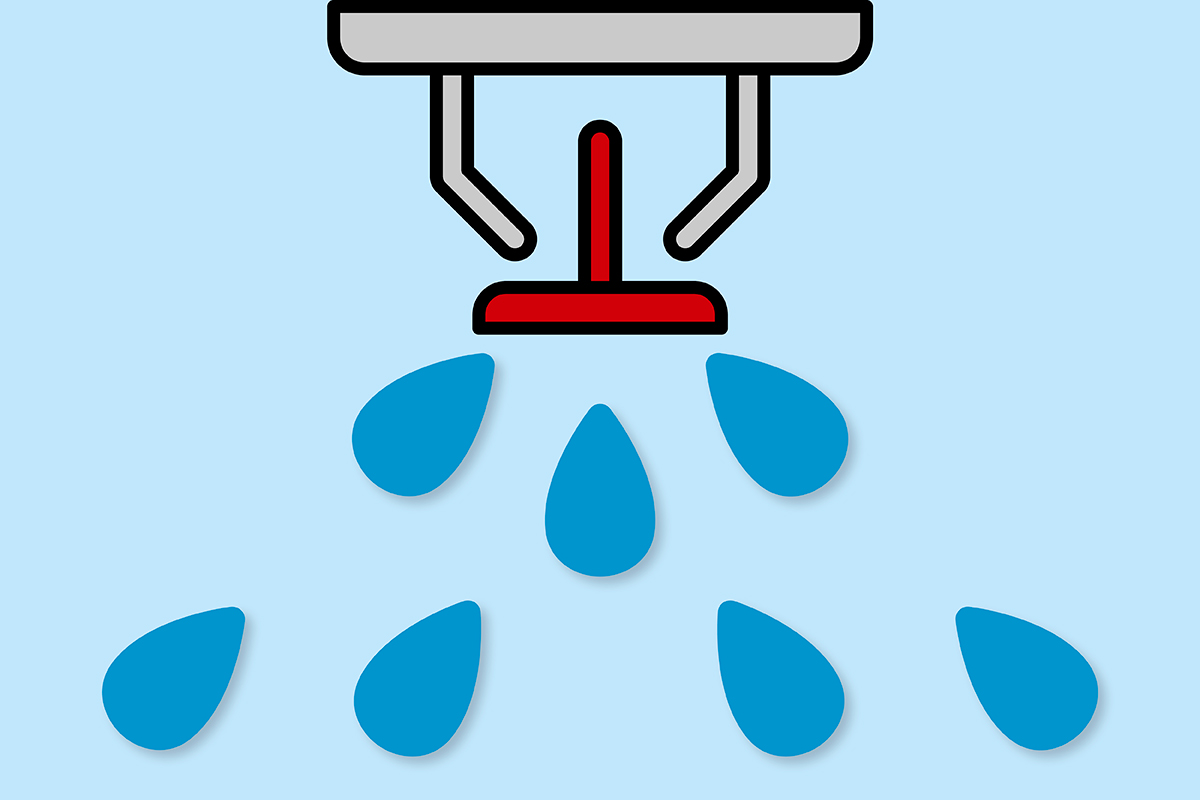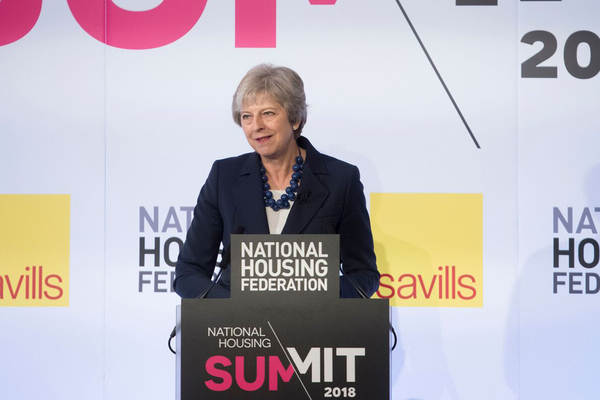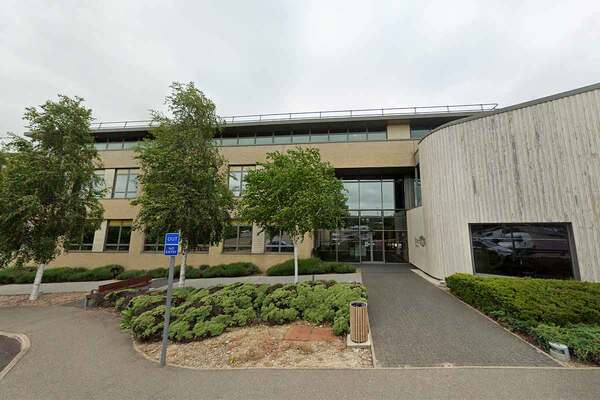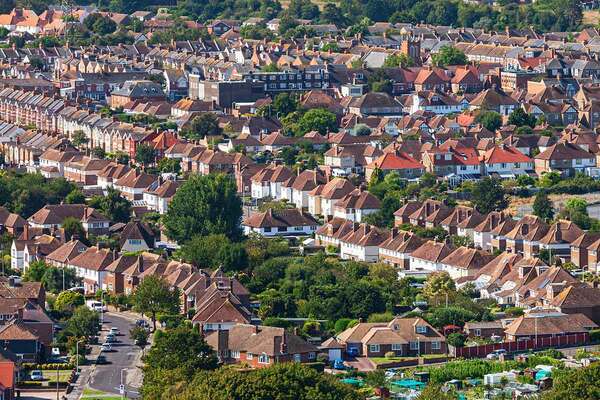You are viewing 1 of your 1 free articles
Sprinklers: what do they cost and how well do they work?
What do sprinklers really cost? Can they really go off by mistake? And how many fires have they actually put out? Nathaniel Barker gathers the data together to find out. Illustration by Getty
Our Never Again campaign calls on the government to fund the retrofitting of sprinkler systems in all tower blocks across the UK (except where there are specific structural reasons not to do so)
In summer 2015, Inside Housing research produced a shock revelation: fewer than 1% of council tower blocks had sprinklers installed within their flats – despite coroners’ recommendations following deadly fires at Lakanal House (2009) and Shirley Towers (2010).
However, after the devastating events at Grenfell Tower in June last year, the picture is changing. Through further research conducted in December 2017, we revealed that social landlords were planning on or considering installing sprinklers in half of the country’s high rises.
There will be many asset managers still left uncertain: caught between the desire to take action and niggling doubts about the cost of doing so.
For that reason, Inside Housing has gathered data from councils and housing associations which have already installed sprinkler systems in their stock, to identify the true costs and key challenges.
Upfront costs
We have obtained figures about 92 social housing blocks where sprinklers are installed in some or all of the flats, plus those in Sheffield City Council’s ‘ranch-style’ flats. Together, the systems have suppressed 12 fires in their lifetimes.
All the systems were installed between 2010 and 2018, with the vast majority put in after 2015.
The total bill was £13.7m. That works out as an average of £3,219 per flat – though the numbers vary wildly. Oxford City Council recently retrofitted sprinklers into five tower blocks at a cost of £1,176.91 per home, while the price tag for Leeds City Council’s 2016 sprinkler installation at Burnsall Court was £6,124.49.
And the costs can be higher still. A senior officer at a London borough says he has received quotes topping £10,000 per flat.
None of the landlords which provided information reported any impact on their insurance costs as a result of having sprinklers installed
“For one thing, we’re in London and that always brings with it an additional cost,” he says. “Second, you have to factor in the scale and complexity of our buildings. And third, there is a shortage of people to put in the kit in the first place.”
Ian Gough, senior technical advisor at the British Automatic Fire Sprinkler Association, agrees there has been “a surge in demand” for sprinklers since Grenfell, particularly in the capital, and acknowledges that this has an impact on prices.
So while our data did not identify a clear rise in average installation prices between 2010 and 2018, £3,219 per flat is clearly an average that disguises some variation.
None of the landlords which provided information reported any impact on their insurance costs as a result of having sprinklers installed.
However, Gateshead Housing Company and Sovereign Housing Association said their insurers’ advice is that sprinklers ultimately feed into lower pricing by reducing the likelihood of large fire-related claims which push up premiums.
The ongoing bill
But what of the ongoing costs? Again, there is huge variation.
ALMO Nottingham City Homes (NCH) said the average cost of maintaining sprinklers across all 609 of its homes which have them installed is just £17.59 per dwelling per year, whereas Manchester City Council pegs its costs at £50 per dwelling, and Sovereign 10 times higher at £176. A number of landlords reported per-block costs of a few hundred pounds, while others said the bill runs into the several thousands.
Mr Gough posits two main reasons for these variances. One, the design of the sprinkler system. British Standard 9251:2014, the official code of practice for sprinklers in residential buildings, recommends that systems are inspected annually, including checks that the valves are working properly.
"There are only a handful of dedicated sprinkler maintenance firms across the country," Ian Gough
Systems with more valves to check or located in hard-to-reach places – such as inside flats rather than communal areas – may take more time and effort to maintain, he explains. “The biggest problem for sprinkler maintenance is how accessible the equipment is,” Mr Gough adds.
“The other thing is the logistics of it,” he says. There are only a handful of dedicated sprinkler maintenance firms across the country – meaning they will often have to send their people hundreds of miles for a job, which can add costs onto a contract.
Anthony Slater-Davison, an external consultant who has been project managing NCH’s current programme to extend sprinklers to all its high rises, said the ALMO does currently use a specialist contractor for maintenance but is training up its own staff.
He agrees that getting into flats to check sprinklers is the biggest challenge – but says NCH has so far had “no real major issues” on that point. Installers of new sprinklers currently have problems getting into a tiny minority of flats, he adds, with the obstacles generally being that residents are out at work, rather than because they refuse contractors entry.
Resident complaints
The sprinklers debate is often fraught with concern about how tenants and leaseholders will react – particularly if a system malfunctions and soaks a flat erroneously.
However, our research identified only 11 complaints relating to sprinklers among the 16 social landlords which provided data. All of these were recorded by either NCH or Oxford City Council.
One of the complaints to NCH was in fact about a tenant’s concern over the lack of sprinklers in their block. Another concerned a dispute with the contractors carrying out the work and one more related to a tenant opposing sprinklers being installed in their flat. There was only one recorded case of a leaking sprinkler flooding someone’s home.
Oxford City Council said that six of the other seven complaints related to “a faulty batch of sprinkler heads” at its Foresters Tower, which did include “a very small number of heads that activated incorrectly” and meant all sprinkler heads in the building were replaced. There was one more unspecified “isolated issue” at Plowman Tower.
"The sprinklers debate is often fraught with concern about how tenants and leaseholders will react"
Mr Gough warns there are “various products on the market which do not comply with the British Standard”. Competency can also be an issue in such a small industry. In September, the Association of British Insurers published an extensive guidance note on the installation and maintenance of sprinklers, emphasising the importance of having competent workers.
Mr Slater-Davison agrees. “It’s about making sure you’ve got the design right and you’ve got knowledgeable people there,” he says.
In short: don’t cut corners. As with all aspects of fire safety, getting sprinklers right is vital. The residents of the 12 flats where fires were quenched by sprinklers will no doubt be glad they were there. And if it’s a matter of counting the cost – just ask those who have had fires without them.
In numbers
11
Number of sprinkler-related complaints recorded
£3,219
Average per-flat cost of installing sprinklers
92
Number of towers covered by the data
12
Number of fires suppressed by sprinklers in social housing
16
Number of councils, ALMOs and housing associations which provided data
£13.7m
Amount landlords spent on installing sprinklers
Never Again campaign
Inside Housing has launched a campaign to improve fire safety following the Grenfell Tower fire
Never Again: campaign asks
Inside Housing is calling for immediate action to implement the learning from the Lakanal House fire, and a commitment to act – without delay – on learning from the Grenfell Tower tragedy as it becomes available.
LANDLORDS
- Take immediate action to check cladding and external panels on tower blocks and take prompt, appropriate action to remedy any problems
- Update risk assessments using an appropriate, qualified expert.
- Commit to renewing assessments annually and after major repair or cladding work is carried out
- Review and update evacuation policies and ‘stay put’ advice in light of risk assessments, and communicate clearly to residents
GOVERNMENT
- Provide urgent advice on the installation and upkeep of external insulation
- Update and clarify building regulations immediately – with a commitment to update if additional learning emerges at a later date from the Grenfell inquiry
- Fund the retrofitting of sprinkler systems in all tower blocks across the UK (except where there are specific structural reasons not to do so)
We will submit evidence from our research to the Grenfell public inquiry.
The inquiry should look at why opportunities to implement learning that could have prevented the fire were missed, in order to ensure similar opportunities are acted on in the future.
The Paper Trail: The Failure of Building Regulations
Read our in-depth investigation into how building regulations have changed over time and how this may have contributed to the Grenfell Tower fire:












